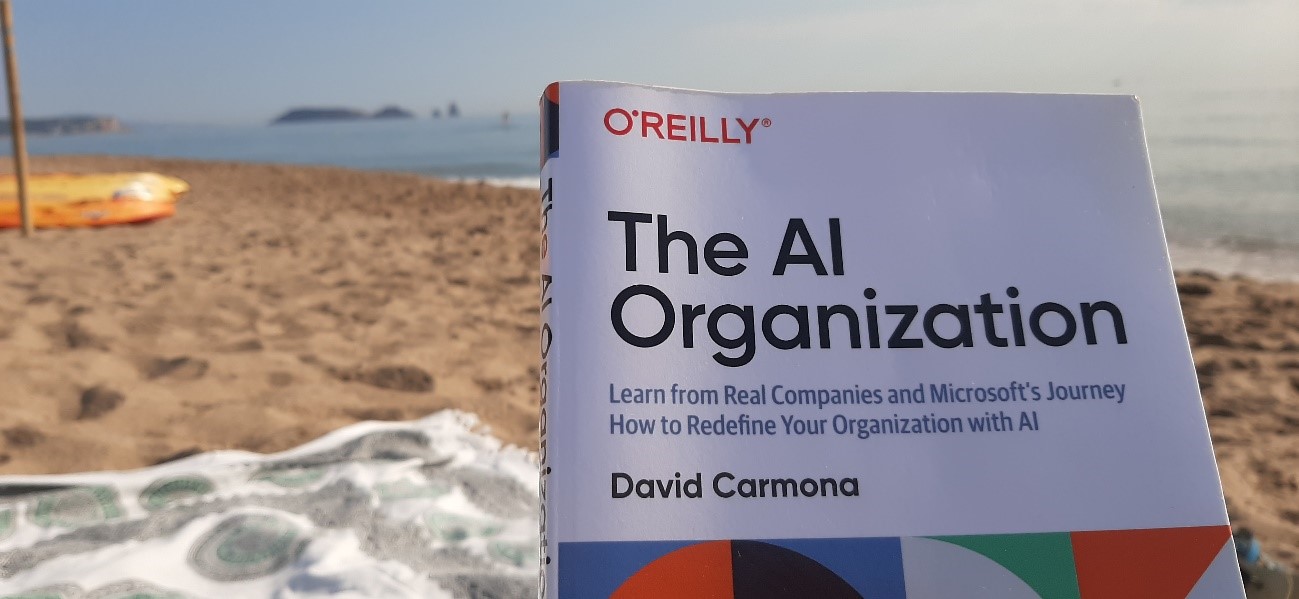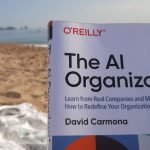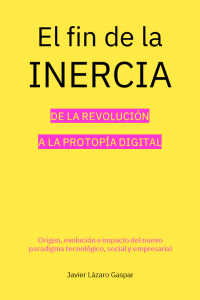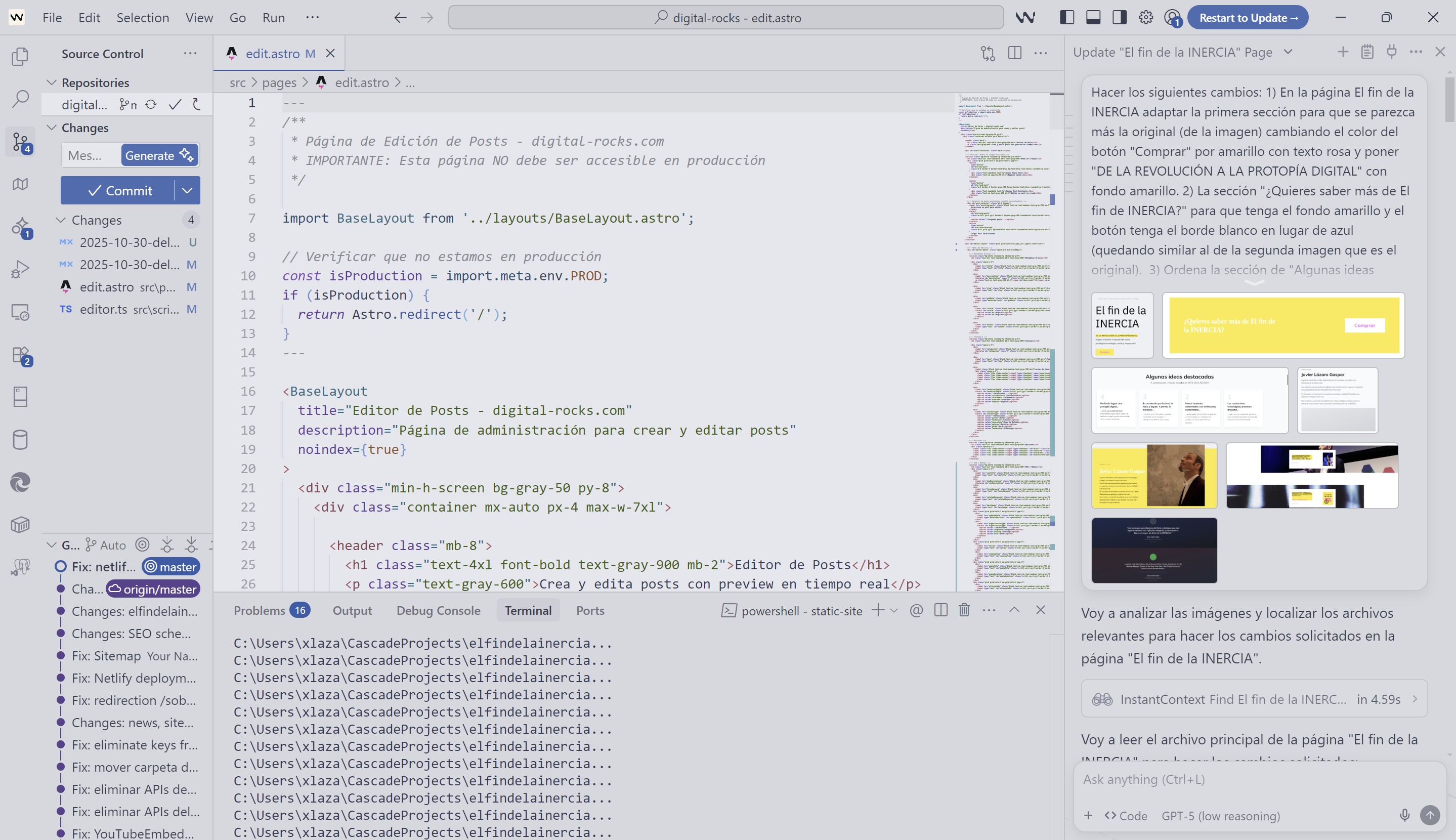The AI Organization (la organización de Inteligencia Artificial)

When everyone is talking about Artificial Intelligence, it’s a good time to reflect on what we need to do to make the most of it.
That’s what I did this summer when I read the book “The AI Organization.” A few months later, I summarize this essay in which David Carmona describes how to transform an organization to extract the maximum value from this technology.
David Carmona
David Carmona is the “AI & Innovation General Manager” at Microsoft. A reference with whom I share valued colleagues and interests. He has decades of experience dedicated to technology, software development, and Artificial Intelligence, mainly at Microsoft.

David Carmona
Reading his book was a duty due to the above, the comments of third parties, and because in recent months I had coincided virtually with him in the recording of the docuseries “LUZ,” about Big Data and AI, and in a conversation organized by Encamina and Fundation29.
Here’s a link to Chapter 2 of “LUZ: AI & Business” presented by Grupo Unísono and Marc Vidal -> LUZ [Ch. 2]: AI & Business
THE AI ORGANIZATION: learn from real companies and Microsoft’s journey how to refine your organization with AI
If I had to describe the book with an adjective, it would be realistic.
At a time when enthusiasm for Artificial Intelligence often overshadows reality, it is gratifying to read a book that does not follow the trend. It is also rewarding that the book does not present the tired negative view that AI has come to dominate us, but rather explains it as a tool available to all to improve our businesses, our jobs, and our lives.
Carmona’s book is structured in three parts:
- The Heroes of Artificial Intelligence: stories of people who are driving and using AI to transform society and their companies. These are easily recognizable names, some of them personally known, with personal stories that give a more intimate and light-hearted character to the book.
- The transformation towards an AI-based Organization: explaining what needs to be done to transform an organization into a new one that relies on AI in all its activities and at all levels. It is not a detailed manual but a set of reflections on the subject. Throughout its development, it refers to the heroes to exemplify that transformation.
- The “AI Crash Course for Business Leaders”: a practical approach for any business leader to dabble, acquire knowledge, and feel like a data scientist for a day. A bold part that, as it could not be otherwise, is supported by Microsoft products throughout the journey.
From this point on, I will focus on the second part: the transformation towards an organization capable of extracting the maximum value from Artificial Intelligence.
What is an AI-based Organization?
David Carmona starts the book with a definition of AI very similar to the approach in the 2018 post: “What is Artificial Intelligence?”. It demystifies the term, distances it from science fiction, and describes how all organizations will eventually become AI organizations.
To begin, the following diagram by Carmona describes the capabilities of AI from a very practical point of view.

Artificial Intelligence Capabilities
An AI-based organization is one that is prepared to make the most of these capabilities.
In his reflection, he likens AI to a new way of developing software:
“Just as all companies are software companies today, all companies will very soon be Artificial Intelligence companies.”
David Carmona, “The AI Organization”
This transformation of organizations is imperative and it is the technical team’s job to drive it, but for it to become a reality, it must also reach the business and all employees.
How to transform into an AI-based Organization?
Carmona describes this transformation as a process that:
- Starts with technical areas
- Extends to business units
- Reaches all employees
Technological Transformation
For technical areas, he suggests reviewing the application portfolio to see which ones make more sense to incorporate AI into or even to rebuild them based on it.
In this process, he proposes avoiding embedding AI within applications since its lifecycle, nature, uncertainty, etc., are different from traditional applications. Having a specialized team is key to ensuring its correct application.
Employee Transformation
Finally, to make the most of AI, it is necessary for this technology to reach all employees of the company through the democratization of:
- Knowledge (remember the meaning of knowledge according to the informational pyramid)
- Consumption of AI (with predefined, known, and governed models)
- Creation of AI
If the reality that all companies are software companies gave rise to “Shadow IT,” the expectation that all will transform into AI companies will give rise to “Shadow AI.” The reflection on this is very interesting and leads to the need to introduce control and coordination mechanisms through a central unit responsible for coordination and global focus. Lack of coordination leads to inefficiencies and, in the case of AI, serious risks of ethics and responsibility.

The AI Organization
What cultural changes does an “AI ORGANIZATION” require?
An AI-based Organization requires four essential cultural changes:
- Collaboration culture
- Data culture
- Talent culture
- Ethical culture
Collaboration Culture
An important change for cultural transformation is to move from developing projects to products and from products to platforms. This is an important reflection and a cultural change that encompasses not only technical areas but the entire organization. The need to focus work on platforms rather than projects or products is one of the necessary characteristics to become an AI-based Organization.
Until the 2000s, we were used to working on projects with defined scope, start, and end. Subsequently, we started thinking about products aimed at a user (whether a client or consumer) where the scope was defined by the user. That is no longer enough.
In the book “Designed for Digital: how to architect your business for sustained success,” the authors defined a digital platform as follows:
“A repository of business, technology, and data components that enable rapid innovation and the configuration of new digital offerings for consumers.”
Jeanne W. Ross, Cynthia Beath, and Martin Mocker in “Designed for Digital: how to architect your business for sustained success”
That definition largely coincides with that of “The AI Organization,” according to which platforms are composed of reusable components to configure various products so that one platform facilitates the construction of the next. Carmona explains how Microsoft and other companies have approached this radical change.
Additionally, the organization requires:
- Agile and MLOps
- Creation of a specialized AI group
- Balance between in-house development and procurement in a complex, fragmented, and variable environment
Data, Talent, and Ethical Culture
For all of the above to be viable, it is essential that the data culture be driven from the highest levels of the organization. This culture must achieve three key behaviors:
- generation of quality data
- data sharing throughout the organization
- use of all data in decision-making
Different departments of the organization require different approaches to “re-skilling” and “up-skilling” to achieve the talent needed for this transformation.
The following diagram, excerpted from Carmona’s essay, summarizes the necessary capabilities in each role.

“Skilling strategy” in an AI-based Organization
When addressing ethics, Carmona describes the principles that govern Microsoft’s activity in the field of Artificial Intelligence. These principles are:
- Justice. Models are designed by humans and trained with real-world data that can be unfair or biased, so it is necessary to establish control and correction mechanisms involving experts in the processes.
- Reliability and physical security. Through testing and monitoring. It is important to always keep in mind the limitations of AI, including emergency measures such as the ability for a human to take over an automatic operation.
- Privacy and logical security. By applying control and audit measures in data collection, use, and storage. It is also necessary to include security in the development and operation cycle of systems incorporating Artificial Intelligence.
- Inclusivity. Considering that AI is redefining the interaction between products and their users, it is essential to ensure that we recognize possible exclusions, learn from diversity, and extend the use of what we solve for specific cases.
- Transparency. It is a key value without which it is not possible to apply all the above.
- Responsibility. Just as in manual decisions there is a responsible person, there must be someone responsible for the decisions made by Artificial Intelligence. This requires, supported by agile and MLOps practices, the creation of a specific lifecycle for Artificial Intelligence.
Opinion on David Carmona’s essay
I believe it is an easy-to-read book and very useful for any leader who intends to implement or is experiencing the implementation of Artificial Intelligence in their organization.It is a popular science book that provides fundamental keys to understand the possibilities and specific characteristics of Artificial Intelligence. Without delving into the foundations of this technology, it offers a simple and accessible vision.
If you are interested in Artificial Intelligence, I recommend not stopping at this summary and reading David Carmona’s entire book. These lines do not do it justice.
References
Below are the references used in this post:
- The AI Organization: Learn from real companies and Microsoft’s journey how to redefine your organization with AI. David Carmona.
- What is Artificial Intelligence?
- Designed for Digital: how to architect your business for sustained success. Jeanne W. Ross, Cynthia Beath, and Martin Mocker.
- The end of INERCIA. Javier Lázaro Gaspar.
- Documentary LUZ: AI & Big Data. Grupo Unísono and Marc Vidal
You can also find more information about Artificial Intelligence and the rest of the technologies that are redefining companies and society in “The end of INERCIA,” a popular science essay about technology and its impact.

The End of INERCIA
Rammstein
As Artificial Intelligence is the key technology of what is known as the Fourth Industrial Revolution, let’s enjoy this iconic Industrial Rock group.
I leave you with Stripped, a fantastic version of the original song by Depeche Mode.
Related posts

From COBOL to Agentic AI: Transforming the Software Lifecycle
Evolution of the software lifecycle applying AI and Agentic AI

Digital Transformation: Beyond Technology
In Digital Transformation, purpose and culture are more important than technology itself.

PROTOPÍA: get familiar with the term
> "Let's avoid the DYSTOPIA (...) > "Let's avoid the DYSTOPIA (...)
All opinions expressed on this blog are personal and do not represent those of any company or organization with which I collaborate.

